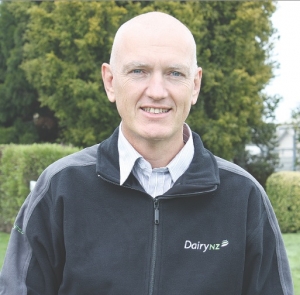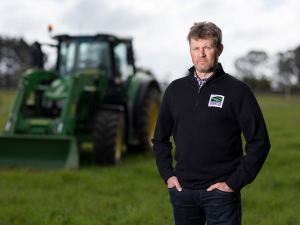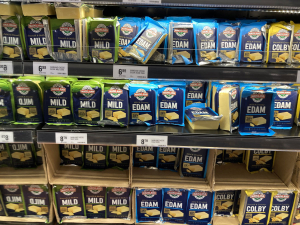The grass now available to cows is almost as high as a Red Band gumboot in Waikato, Taranaki, Manawatu and Canterbury. And it’s dryer than normal so the grass isn’t getting trampled.
“It is a different August from what we are used to – good pasture cover and very dry underfoot so there is less wastage of the grass that is there,” McBeth told Dairy News.
The cows aren’t trampling the grass into soft mud. “So there’s higher grass in the first place, the cows can eat more of the grass and the dry matter content is also a bit higher.
“In relative terms, that is like a 20% increase in the actual amount of feed per mouthful of grass. If a cow comes along and gets a mouthful of grass today she is probably getting about 20% more dry matter than in a normal August.”
Farmers need to take this into account in their spring rotation planning, he says. A paddock might look like it has about 2800-3000kgDM/ha cover, which usually means a cow needs about 2-3kg of supplement. “But really they won’t because of factors of high utilisation and high drymatter in the grass. It’s a great problem to have.
“But as we always keep saying to farmers: look at the residual grass when the cows come out of the paddock and make sure you graze residuals down to 1500-1600kgDM/ha. If the cows are producing well and are content then that’s probably telling you they are being adequately fed even if the maths doesn’t add up for you.
“What is happening is the cows are getting more feed than your normal calculations would indicate.
“You are better managing 90% of your farm really well and shutting up 10% for silage at some stage or grazing it off for dry cows. Every farm is going to be different… but don’t lose quality across your whole farm which is easily done at this time.”
McBeth says the risk to cutting silage at this time of year is the moisture content will remain high because you haven’t got good drying conditions. “So wilting the silage down to a good moisture level to make good quality silage is a bit of a risk. If farmers are making silage as a management strategy, they probably should think about using inoculums to speed up the process and ensure a good ensiling process takes place.”
McBeth says it is a busy time of year with multiple mobs of stock, but farmers need to be thinking about their farming systems because they are dealing with conditions now which are similar to late September or early October. If they don’t manage the farm a bit differently they will end up with pasture quality issues in September-October. That will affect the nutritional quality of the grass and the amount of milk that can be produced.
Options for farmers include speeding up the rotation, using less supplement and nitrogen.









